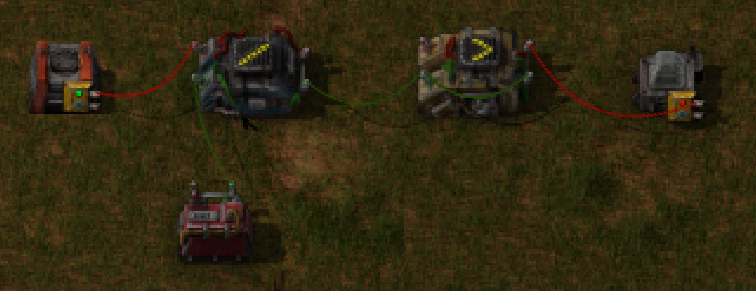
So quick explanation.
C = negative of the center value
H = hysteresis, plus minus this are your trigger points
Constant: C
Arithmetic: each / H
Decider: each > 0 = 1 each
So if you wanted 40, 60 you set C = -50, H = 10
The system works because the divider rounds towards zero. We adjust the input to be centered around zero with the constant. So -9 to 9 outputs 0, but -10/10 outputs -1/1. These trigger the decider that stores the current state.
Simple!



